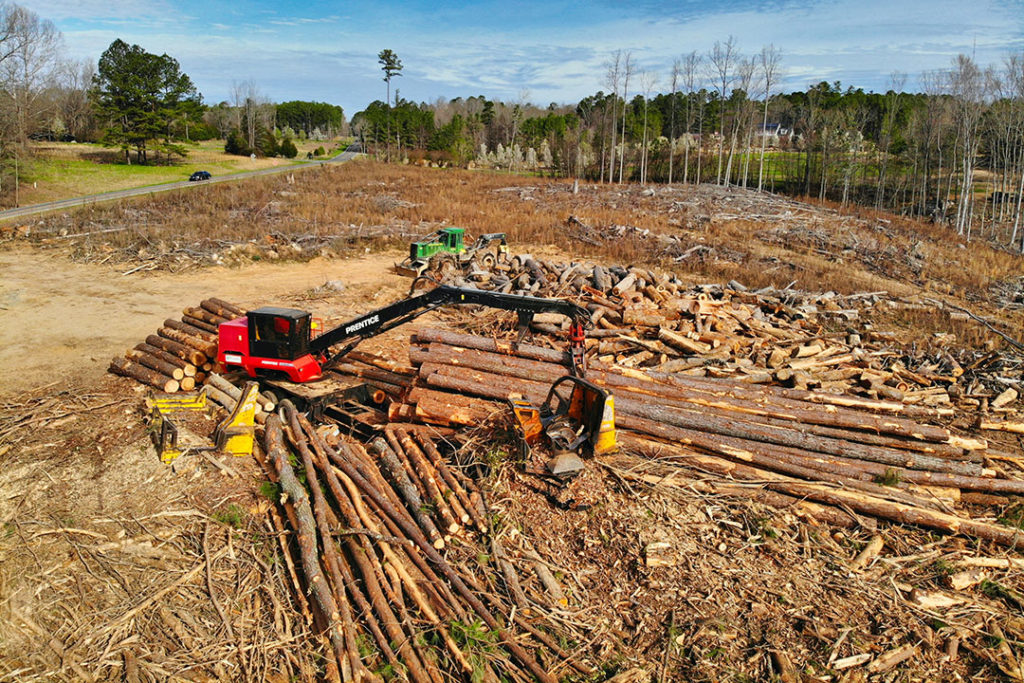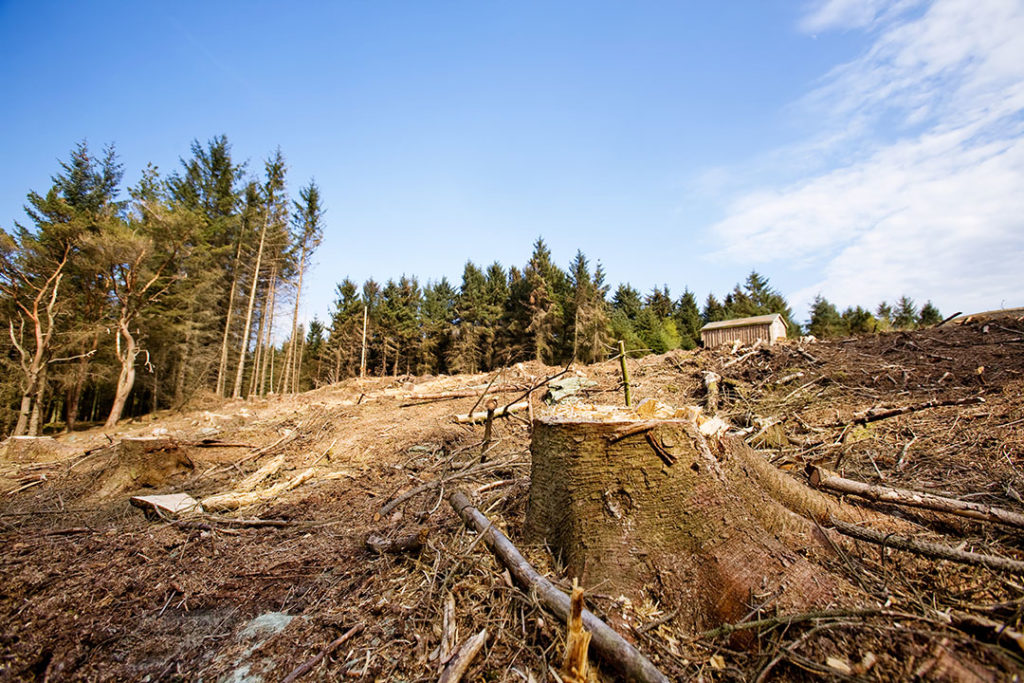Hidden Logging Emissions Jeopardize Canada’s Climate Plan
Believe it or not, each year, greenhouse gas emissions from logging Canada’s forests are as high as the emissions from all domestic oil sands operations.
It may sound far-fetched, but there’s good evidence to back it up. And Canada’s 2030 Emissions Reduction Plan—expected to be released on March 28—won’t succeed unless it tackles these emissions.
Canada has committed to reducing human-caused greenhouse gas emissions (GHGs) by 40-45 percent (from 2005 levels) by 2030.
It is still unclear how this target will be met.
Many hope that the new plan will answer that.
Public attention will naturally focus on how Canada plans to cut emissions from the energy and transportation sectors. But how the plan approaches the logging sector could make or break Canada’s shot at hitting its target.
Canada is one of the biggest logging countries in the world. Hundreds of thousands of hectares of intact forest are cut down each year by logging companies, releasing tens of millions of tonnes of carbon into the atmosphere.

The Canadian government claims that net emissions from logging are minimal, since some carbon remains stored in timber for years, and since growing trees suck up a lot of the carbon (so-called “carbon removals”).
This claim should be—and is being—increasingly challenged.
Recent research by Nature Canada and other conservation organizations shows that Canada is significantly understating emissions associated with industrial logging.
Canada’s current approach to measuring and reporting forest carbon emissions and removals is flawed in three key ways.
First, and most significantly, Canada’s approach to accounting for wildfires is hiding millions of tons of forest-sector emissions each year. It also fails to abide by the guidelines for national GHG inventories that all countries have agreed to under the UN’s Intergovernmental Panel on Climate Change (IPCC).
The IPCC allows countries to classify emissions from wildfires as “natural” (not due to direct human actions) and therefore not count them towards their GHG inventories. However, if countries do so, they should not be claiming credit for emissions removed from the atmosphere by trees that regrow after fires.
This guideline ensures that countries don’t game the system by claiming credit for carbon removals (equivalent to negative emissions) from the regrowth of trees after fires, while not taking responsibility for emissions from the fires themselves.
But that is exactly what Canada is doing.
In 2019, Canada claimed a credit of more than 80 million tonnes of carbon dioxide removals resulting from natural tree regrowth after wildfires, as if these removals were human-caused. Yet it did not report a single tonne of emissions from the fires themselves, on the grounds that those are naturally occurring.
In other words, Canada took credit for a vast carbon “sink” that it shouldn’t have–enough of a sink to cancel out almost all emissions from logging that year.

Second, Canada is masking the full climate impacts of logging by failing to measure and report most of the emissions caused by the creation of barren areas to store and move logs (an omission on the order of ten million tonnes of carbon dioxide a year).
Third, Canada uses an artificial baseline against which to measure emission reductions in the logging sector. Instead of measuring progress towards its 2030 emission reduction target against 2005 levels, which it does for all other sectors, Canada measures emission reductions in the logging sector against a “business-as-usual” baseline. This artificially-inflated baseline allows Canada to claim a free credit of about 19 million tonnes towards its climate target, without actually reducing emissions.
The extent of Canada’s understatement of net emissions from the logging sector, caused by the above accounting flaws, is significant: it is equivalent to Canada failing to report all the emissions from oil sands operations in our country.
Canada’s 2030 Emissions Reduction Plan will only be effective if it fully and accurately accounts for all GHG emissions from all sectors, including the logging sector.
To protect Canada’s globally-significant forests and be a true international leader in tackling the climate crisis, Canada must commit to better account for—and reduce—logging emissions in its upcoming 2030 Emissions Reduction Plan.



